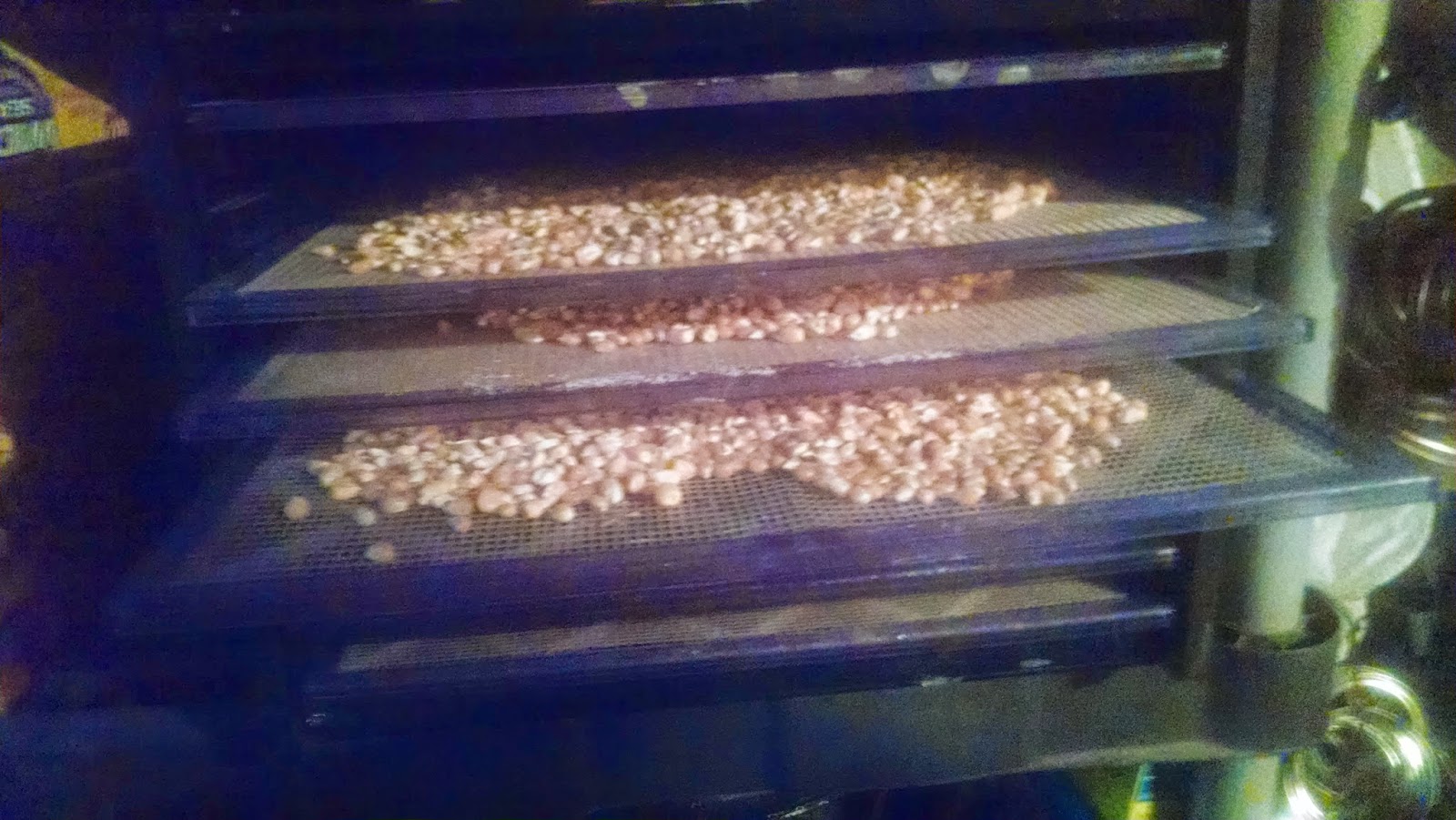We've reached the half-way point in our CSA this week! My, how time does fly by! Children are heading back to public school, the winter squash and pumpkins are now being picked for the markets, and even the weather has had a nip of fall it all ready! It seems like everything is in a rush.
 |
| We won "Best Tasting Tomato" at the Franklin Farmer's Market last Saturday with our Lemon Boy Tomato! |
Who are You Dependent On?
In past posts I've talked about the old-fashioned, no green,...I mean sustainable lifestyle. These words are fashionable, but the true commitment to live
truly sustainable would bring us a lot more comfort in these turbulent times than just a fad is able to do. If you are living sustainable you'd be prepared for the uncertainty that abounds.
Another word that described a group of folks around the turn of the century was "Prepared". During the months before Y2K folks were preparing for the technology collapse, economic collapse, and food and oil shortages. The wise took some precautions, and others just scowled and called them alarmists. The wise were relieved, and grew to be frugal,...green...no, sustainable.
Today, 14 years latter, there are even more
uncertainties in our lives...just no exact dates. We hear reports of government shut-downs, huge governmental debts that are impossible to pay back, drought, epidemics, shortages, natural disasters, ETC. During these times we can not depend on the government, science, or technology to be our lifeline. We must take personal responsibility for ourselves and families.
We as a family moved to our farm in the months preceding Y2K, and were prepared for whatever the computers of the world threw our way. It was a natural step for us as we all ready were living as
"sustainable" as we knew how. We had canned as usual, and even tried our hand at canning meat and butter for the first time. We had a non-electric way to retrieve the water from our well, and used a wringer washer to wash our laundry in a minimal amount of water. We heated with wood and had plenty of lanterns and candles to light our small home when necessary. We had chickens to provide eggs, and goats for our milk. We also had a good supply of our grains and a hand powered mill so I could
continue to bake bread and other whole grain products that we were used to "just in case". I had researched home health care beyond our basic herbal remedies to arm us with the knowledge we may need in case of emergency also. For us to be ready for the unknown of January 1, 2000 was a family challenge.
I remember when the t.v. showed the world that the lights were on in Australia....we were all relieved. The next morning the sun rose as usual and we were able to turn on the lights and use the computers. Relieved, we didn't do as some folks we knew who unloaded their cans of dehydrated foods on us. To them the crisis was over and they were back to depending on their daily or weekly shopping trips. We continued to live in the challenge. Our
 |
| Isaac harvesting honey for the fall and winter. |
You may be asking how this relates to you...in the city or town where you live far from the rural mountain farm where we live? Who are you dependent on? I am not an alarmist..but I think I am very practical. The stability of our homes depends largely on the parents provision physically, emotionally and spiritually. We need to be able to provide the security our children need whatever the situation. If the power grid were to go down this weekend for a prolonged period of time, what would you do? If an epidemic of unknown origin were to sweep across the state and your city was quarantined, what would you do? If our supply of foreign oil were to be cut off, and the trucking industry shut down resulting in bare shelves at the grocery store, what would you do? And even more realistic, if your spouse lost their job, and you had to live on unemployment income, what would you do? Who could you REALLY depend on?
It's easy to see why we don't live a more prepared (sustainable) lifestyle like past generations did.
"Progress" and the technological advancements of the past decade have lulled us into a false sense of security. We are spoiled into thinking we can have anything we want anytime we want it. Amazon Prime, easy credit, and buy now/pay later plans abound! We take for granted the public utility services, and get frustrated when they are not available for a few minutes! We are so pampered with Walmart's 24-hour availability that the thought of bare shelves is a far fetched notion. We bank at any hour, purchase the desires of our heart while in our pajamas in bed, and we don't even see real money exchange hands! We are a plastic society that is addicted to the technology that feeds this hand-to-mouth lifestyle. We like the idea of becoming sustainable...but the deprivation of our desires behind the word is glossed over in the attempt to be fashionable.
I won't be able to solve the whole issue tonight, but my main goal of this blog entry is to wake us all up to the very real possibilities I mentioned above. We lead such government, technology, and Monsanto dependent lives that if there was a real crisis we would be found wanting in many areas and in a crisis.
So, what does it REALLY mean to live a sustainable lifestyle? Not just green...but more "old fashioned" in a modern world? There are many lifestyle changes that will save money in the short term, and bring comfort in the midst of hardship that we all can begin to make. Unlike 1999, the Internet has exploded with knowledge that is easily obtained to lead you step-by-step to a more sustainable lifestyle without going radically overboard.
Here are a few steps you can take now:
*Build your pantry~ If rice is on your grocery list, buy two instead of one. Repeat this simple process again and again with your staples. Rotate your food stores with your latest purchases going in the back of the shelves and sliding past purchases forward.
Another idea is to join a food co-op. We belong to two. Cloverdale is the group we order with in bulk
 |
| Charity is perched on top of our stack of newly arrived grains. |
The other group we order with is Naturally a Deal. It is the home business of Jonathan Einwechter and a great way to find some real bargains! If you like the adventure of shopping United Grocery Outlet or
 |
| Garlic |
*Home supply closet~ We live 30 minutes from the nearest real store. If we run out of toilet paper,
light bulbs, or cleaning supplies I do without until someone is going to town. My solution has been to keep a stock of non-food items also. We buy cases of Scott-like toilet paper from Naturally A Deal, and keep a stash of ingredients to make our cleaning supplies on hand. I use the same system for these items as I do the food items. Pintrest has a lot of ideas that can help you organize a storage closet.
*Alternative emergency lighting ~ Our forefathers scheduled their days around the rising and setting of the sun. If we were to be without light, this would be our mentality too. We keep the old fashioned kerosene lamps on hand. I love to light a table with them in the winter, and they come in handy when the power goes out....which is often
in our rural community! I don't trust the children with candles or lamps, so we use LED flashlights, and even LED candles to give the needed comfort when the power is off. Some lamps give better light than others, and lamp oil is expensive. If you learn to keep your wick trimmed and low you can use kerosene sold at gas stations. We keep a 5 gallon kerosene tank on hand. One day I'd love to be able to invest in some of the lights from Lehman's, which is one of our favorite places to buy sustainable items.
*Emergency medical supplies ~ Since we use herbs to build our immune systems and treat minor
 |
| A peek into our "personal supply closet". |
With 13 children we've had our share of medical emergencies to deal with. I would have to say nasty cuts are at the top of our list. Years ago a doctor told me that most emergency rooms have stopped using stitches for "minor" cuts. He recommended me having a supply of Super Glue on hand. He then told me how to use it. (Stop the bleeding by elevating the part of the body that is injured, and keep pressure on it. When the bleeding has stopped, clean the wound and put a antibacterial salve on it. Using your Super Glue, squeeze a bead of glue in a line along either edge of the cut. Let it set a few seconds before drawing the two sides together with a bit of pressure and connecting either side of the cut with a few other beads of glue in a "railroad track" fashion. Let dry thoroughly. Super Glue is sterile, so it makes a great bandage that doesn't need to be changed. It simply wears off as the cut heals. If you peak into my "emergency" tub you will find small tubes of Super Glue!
There are many more areas we could talk about, but I'll save them for further posts. Just take time in the coming week to think through who you want to be dependent on.
In all situations I am ultimately dependent on God Almighty for His sustaining love and provision. He alone knows what today will hold, let alone tomorrow or next week. He has promised me if I ask for wisdom, He will give it to me. I'm daily learning to trust Him for direction for what is best for me, and my growing family. I will not fear in the midst of all the uncertainties I face, for He alone is able to "keep that which I committed unto Him against that day"! Praise His name!
"If any of you lack wisdom, let him ask of God, that giveth to all men liberally, and upbraideth not; and it shall be given him."
James 1:5
Abundant Blessings,
The Farmer's Wife
Val
 |
| We harvested honey this week! Stock up for the winter as these little guys won't last long. |
 |
| Grilled Vegetables |
 |
| Fresh cinnamon rolls made with our fresh stone ground wheat. |
 |
| Picking squash |
 |
| Kale...a farm favorite green! |
 |
| It's hot pepper season! Read this week's blog on hot peppers from our virtual farmhand at Full Tummies . |
 |
| The boys dig potatoes for the shares each week. There's nothing that can beat a fresh dug potato! |
 |
| Braided loaves of fresh whole wheat bread ready for the market in Crossville. The house sure smells good! |
 |
| My favorite snack food! |
 |
| We salvaged the "bad and the uglies" from last week's onion harvest and ended up with 33 pounds of usable onions! We are busy dehydrating them to make Onion Season Salt! |
 |
| Thank you for allllll your help Cerina! (This is a 5 gallon salad spinner.) |







































